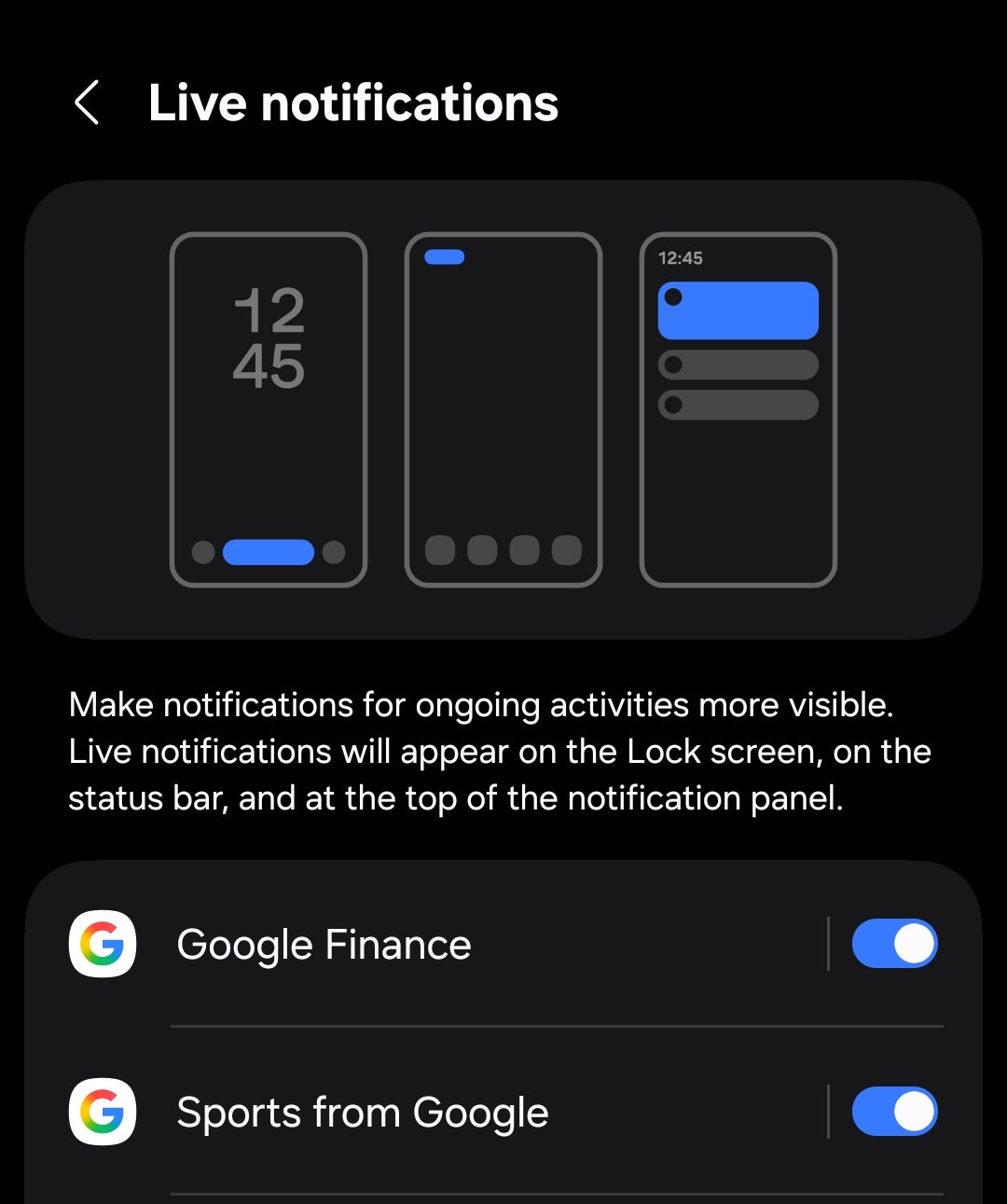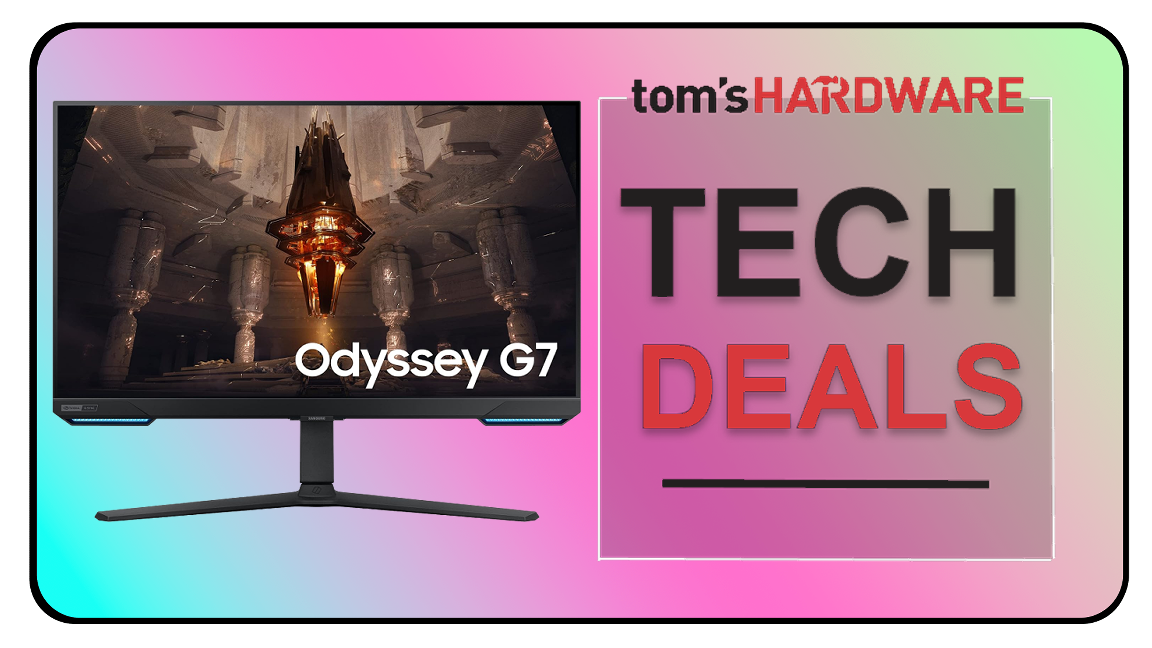Best Multicolor 3D Printers 2024
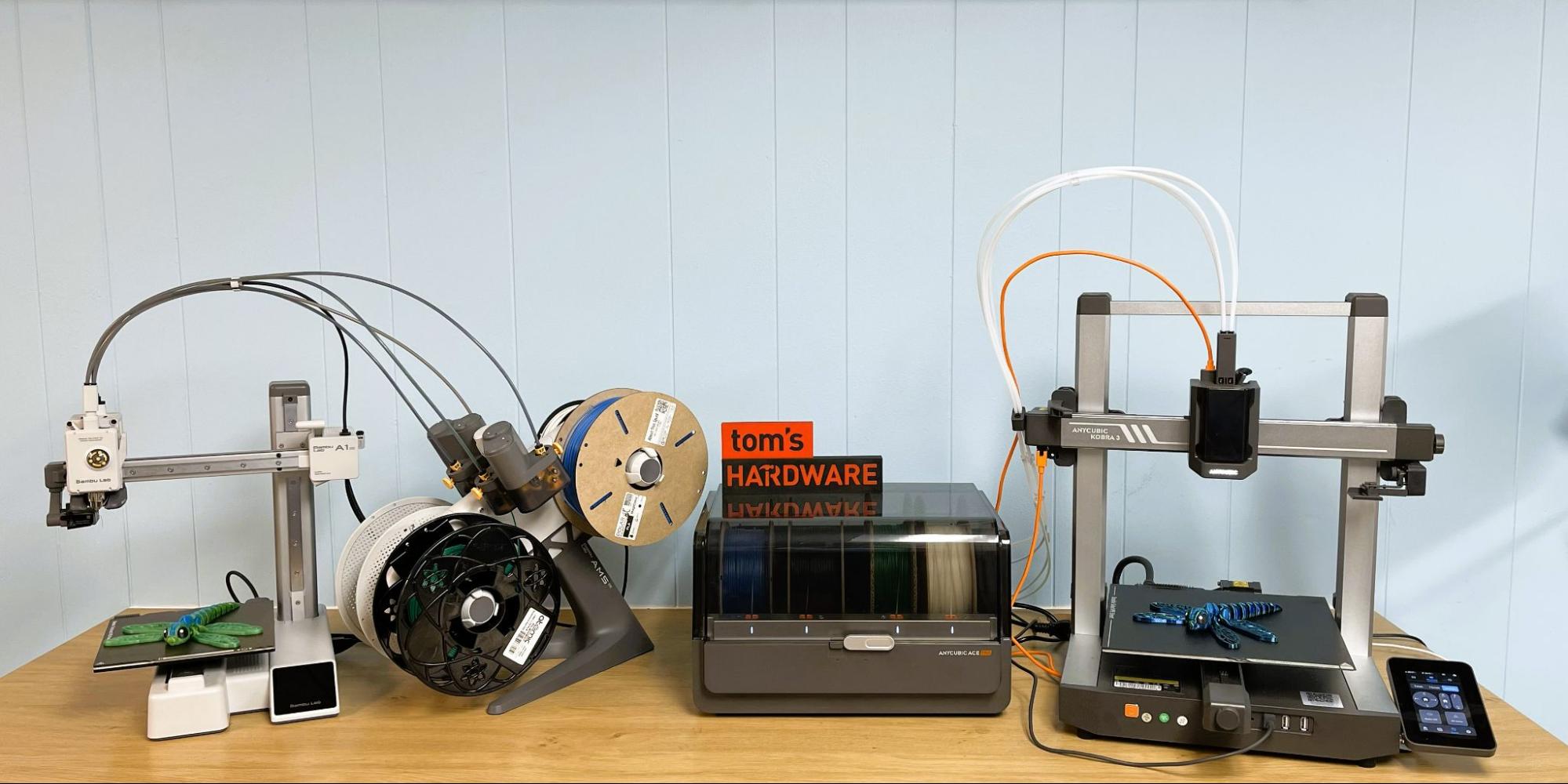
The competition for the best multicolor 3D printers is heating up, and now consumers have more choices when it comes to 3D printing in color.
Bambu Lab didn’t invent multicolor 3D printing but made it reliable, accessible, and fairly affordable with its AMS (Automatic Material System). Before the launch of the X1-Carbon in 2022, we may have seen the occasional two-headed IDEX printer or expensive color add-on devices like the Mosaic Palette 3 Pro. However, these machines were often inaccurate and difficult to dial in. Only Prusa Research persisted with its MMU system and finally launched a reliable “full color” mod for its 3D printers.
Anycubic Kobra 3 with ACE was the first to clone Bambu Lab’s AMS. And Creality is expected to release a four-color Core XY later this year. Many others will surely follow.
Not all multicolor printers are created equal. We’ve tested and compared some of the best on the market to help you make an informed buying decision. Below, you will find a list of the best Multicolor 3D Printers. And if multicolor isn’t your top priority, check out our list of the best 3D printers overall.
Quick List
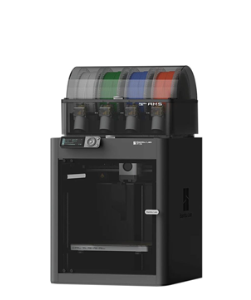
1. Bambu Lab P1S with AMS
AMS compatible with Bambu Lab X1-Carbon and P1P
The Bambu Lab P1S AMS combo is a powerhouse multicolor printing machine. With four filament slots available and support for up to 16 colors. It runs at amazingly fast speeds, is reliable, and is easy to use. It’s a great choice for anyone who wants to try color 3D printing for the first time or to start a print farm. It costs $349 by itself and $849 for the combo ($100 cheaper). Available at the Bambu Lab online store or a Micro Center near you.
Read more below
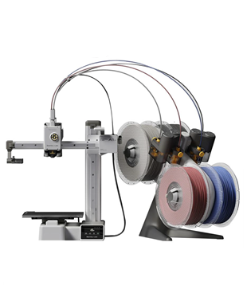
2. Bambu Lab A1 Mini with AMS Lite
Also compatible with Bambu Lab A1
The Bambu Lab A1 Mini with AMS Lite is a small but mighty color machine that is great for novice users and is kid-friendly. It is super easy to set up, and you’ll get almost perfect prints each time. It also runs as fast as the P1S but for $500 less. If you can live with a smaller build volume, then the A1 mini with AMS Lite is worth considering. Available directly from the Bambu Lab site and at Micro Center.
Read more below
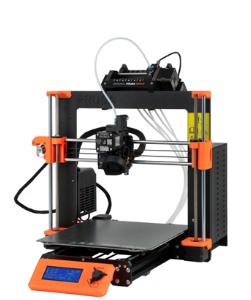
Compatible with Prusa Research MK3S+ and MK4S
Not for the faint of heart, the MMU3 requires an experienced maker to install and use. It’s an add-on tool for Prusa 3D printers, enabling 5-color printing using a single extruder. It’s an awesome mod if you are up for the challenge. It’s also eco-friendly as per our testing results, it outputs clean results with very little waste.
Read more below
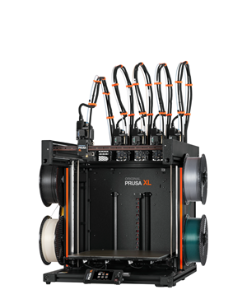
Built into the Prusa XL Tool Changer
Designed for multicolor and multi-material printing, the Prusa XL allows you to combine PLA and PETG filaments in your print jobs effortlessly. However, this convenience does come at a premium. You can buy the XL semi-assembled for $2,499 with a single toolhead or add up to five toolheads for a whopping $3,999.
Read more below
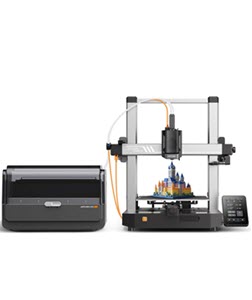
5. Anycubic Kobra 3 with ACE
ACE – Only Compatible with Kobra 3
The Anycubic Kobra 3 with the ACE Pro system enables four to eight color high-quality prints and doubles as a filament dryer during printing and for storage. You can purchase ACE Pro separately for $289 or get the Kobra 3 combo at an affordable $379 and save yourself $160.
Read more below

Denise Bertacchi
Denise has been using 3D printing as a creative outlet since 2020 when she got her first Creality CR10s. She’s been a freelance newspaper reporter, online columnist and craft blogger with an eye for kid’s STEM activities. She’s added YouTube to her social media skills and has traveled cross county and overseas to talk 3D printing with fellow makers. She’s analyzed nearly 100 different 3D printers, from a tote bag sized delta to a meter wide Elegoo OrangeStorm Giga currently camped out in her living room. When she’s not building 3D printed RC cars or stirring glitter into a batch of resin, you’ll find her at the latest superhero movie with her husband and two sons.
Best Multicolor 3D Printers You Can Buy Today
Why you can trust Tom’s Hardware
Our expert reviewers spend hours testing and comparing products and services so you can choose the best for you. Find out more about how we test.
Best Enclosed Multicolor 3D Printer
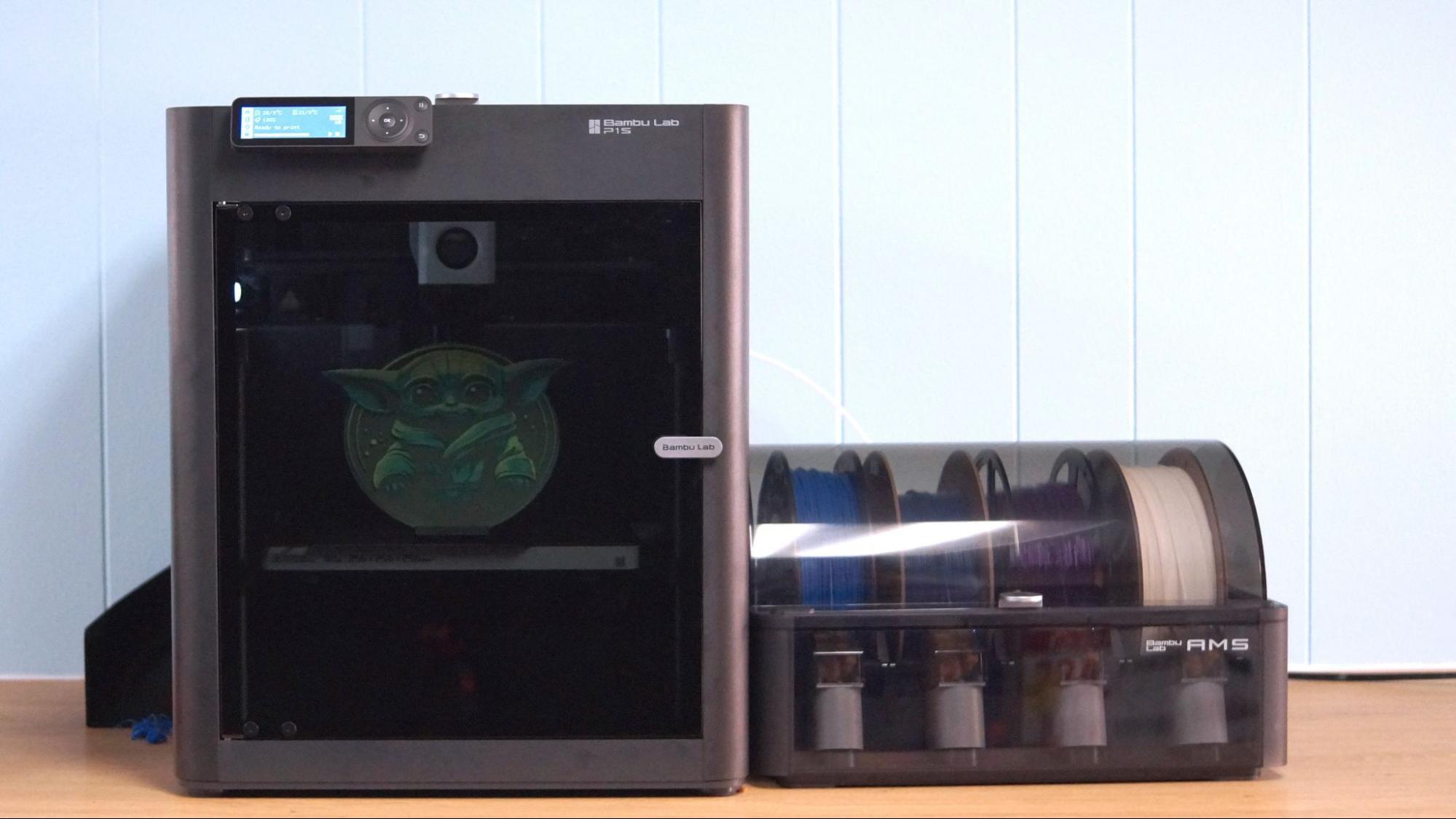
Bambu Lab’s AMS is the first of its kind and has introduced many to the world of multicolor printing. Most of the unit is enclosed in a neat shoebox-sized contraption that can sit on top of or next to your Bambu Lab P1S, X1-Carbon, or P1P. The P1S is an excellent choice for color 3D printing, as the enclosure allows it to print high-temperature filaments like ASA and ABS.
The AMS (Automatic Material System) comes fully assembled and only needs a few wires and tubes connected in order to work. Up to four AMS units can be daisy-chained together to achieve a 16-color print. The system is very user-friendly in the beginning, but maintenance requires a lot of patience to disassemble the machine. The tight bends in the tubing and the constant back-and-forth motion of the filament mean the Bowden tubes will wear out quickly, especially if you’re fond of glitter and other abrasive materials. I wore a hole in one Bowden tube within six months of use.
The Bambu Lab method of cutting filament at the cold part of the toolhead and pushing the rest through results in a lot of waste, affectionately called “printer poop.” This poop can be lessened with tuning in the slicer but can not be eliminated. Most consider this waste a fair trade-off for the convenience of colorful prints.
This method is also slower than others because of the time it takes to swap filament. I timed the swaps at one minute and 46 seconds due to the length of Bowden tube the material has to travel.
*️⃣ Test Print
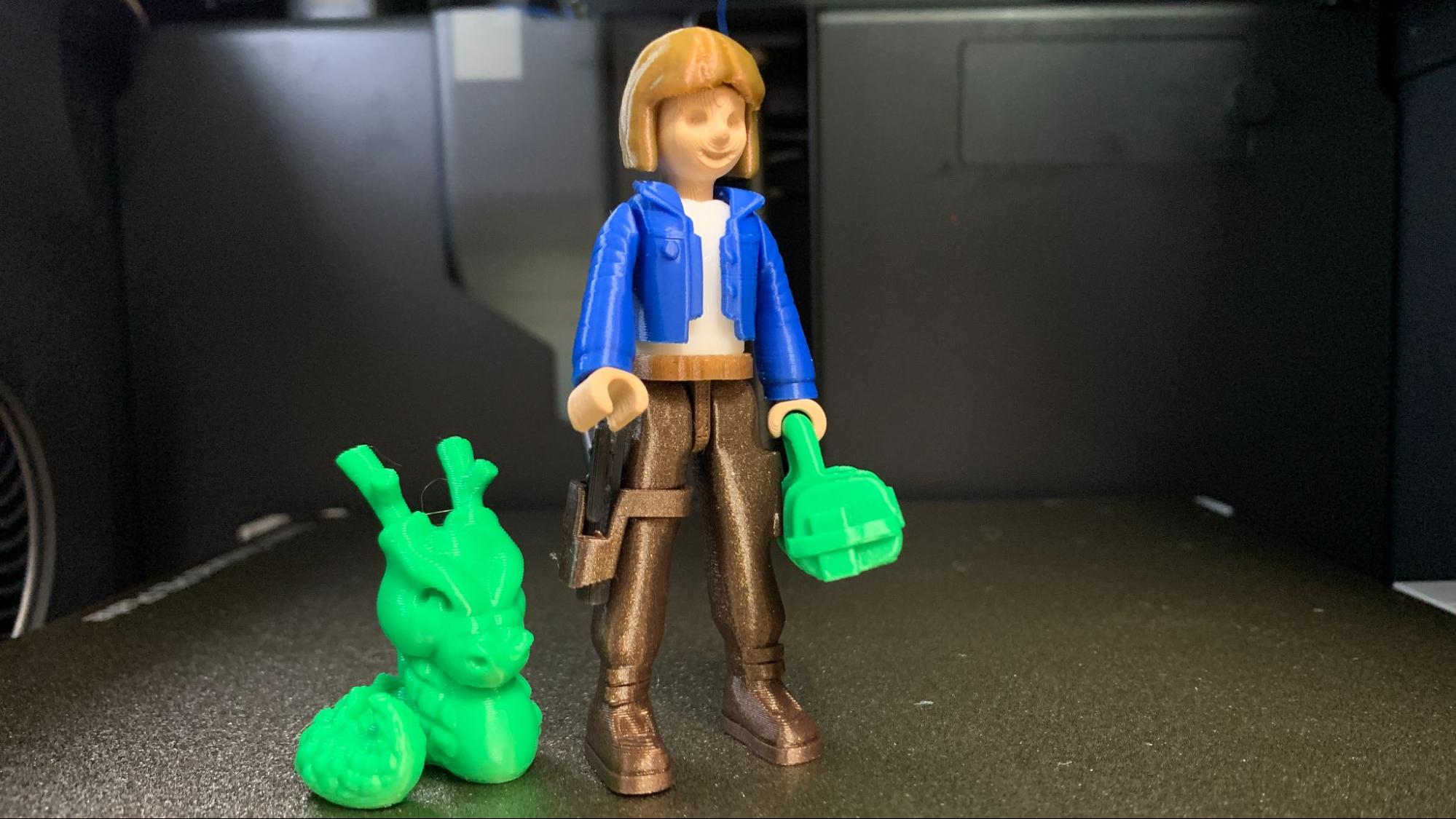
PlayAction’s Kay Vess action figure shown above was made using Bambu green PLA, Inland Blue, Black, White, and Light Brown PLAs, Polymaker Starlight Jupiter (hair), and Protopasta Double Espresso (pants), each part printed individually on a shared plate.
The AMS works best with Bambu Lab filament, of which there is a large selection to choose from. Bambu Lab tags each spool with an RFID tag that allows the printer to identify the type and color of the material in the slicer. Many 3D party spools will also work in the AMS, but some spools – like Atomic or Prusament – are too wide. Cardboard spools can be problematic as they create dust that can clog up the mechanism and lack enough friction to work well on the motorized rollers. Members of the community have shared printable adapters to fix most of these problems.
Please note that the Bambu Lab AMS can not print TPU. TPU must be used on a separate, non-mechanical spool holder.
More: Bambu Lab P1S Review
Best Multicolor 3D Printer for Beginners
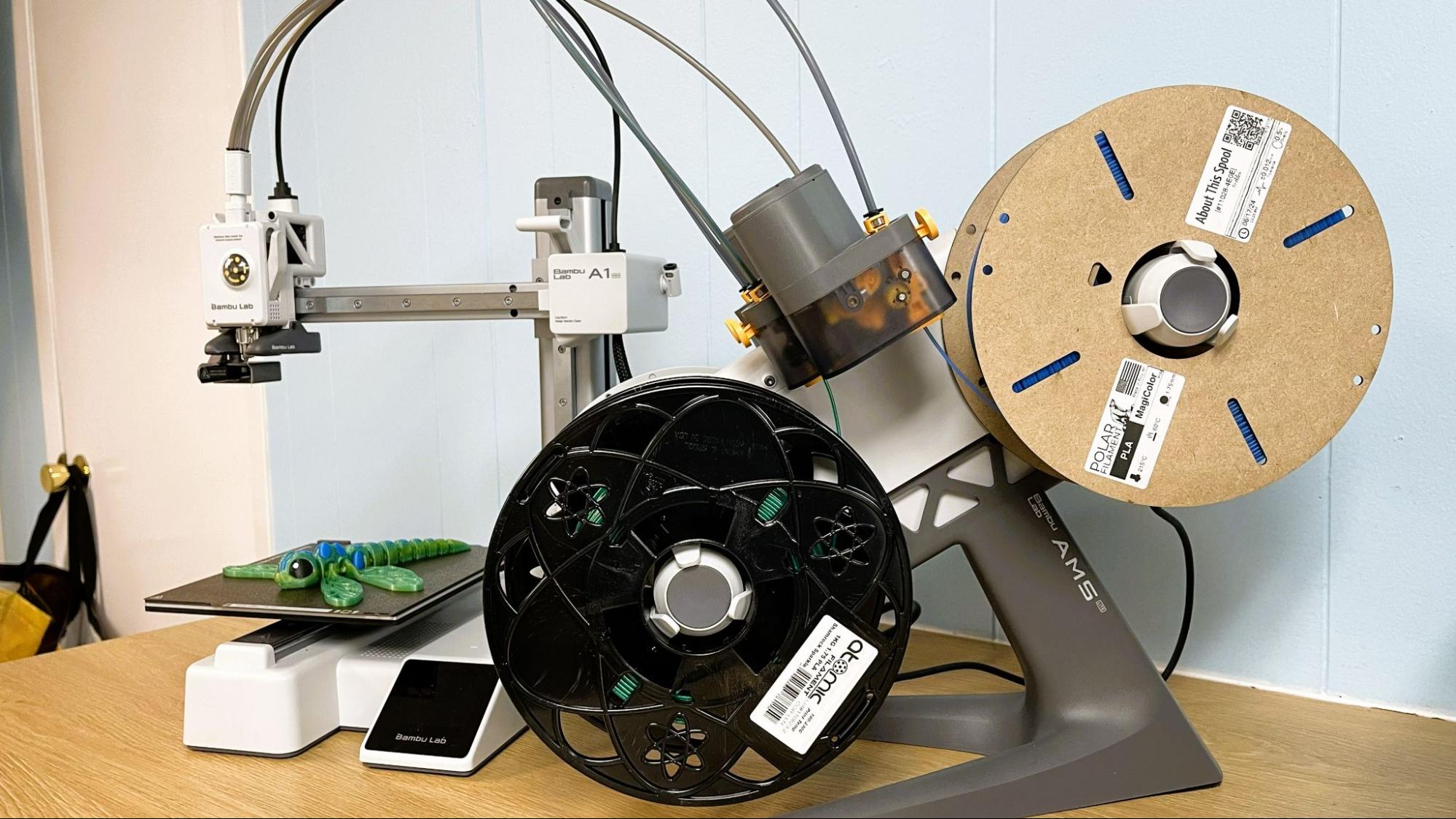
Bambu Lab’s AMS Lite was made solely for the A1 and A1 mini bed slingers. This is my favorite of all the multicolor devices I’ve tested as it is simple to use, easy to maintain and rarely goofs up. The odd looking design is meant to sit on the right side of the printer, but Bambu Lab provides a printable clip you can use to mount the AMS unit on the gantry of the full sized A1.
The AMS Lite (Automatic Material System) comes mostly assembled, with a few pieces needing to be fitted together. There’s one cable to be plugged into the printer and four tubes to guide the filament to the toolhead. Unlike the original AMS, this one can not be daisy-chained, and it is not compatible with the Core XY machines.
Maintenance is much easier on this unit as every thing is out in the open. Spools are held from the center cores, which allows the AMS Lite to use more 3rd party filaments. Cardboard spools are not an issue. Still, some brands do not have the appropriate sized center holes and will not fit. Like the other Bambu Lab AMS this one reads an RFID tag on the spool to identify the type and color of the material in the slicer.
*️⃣ Test Print
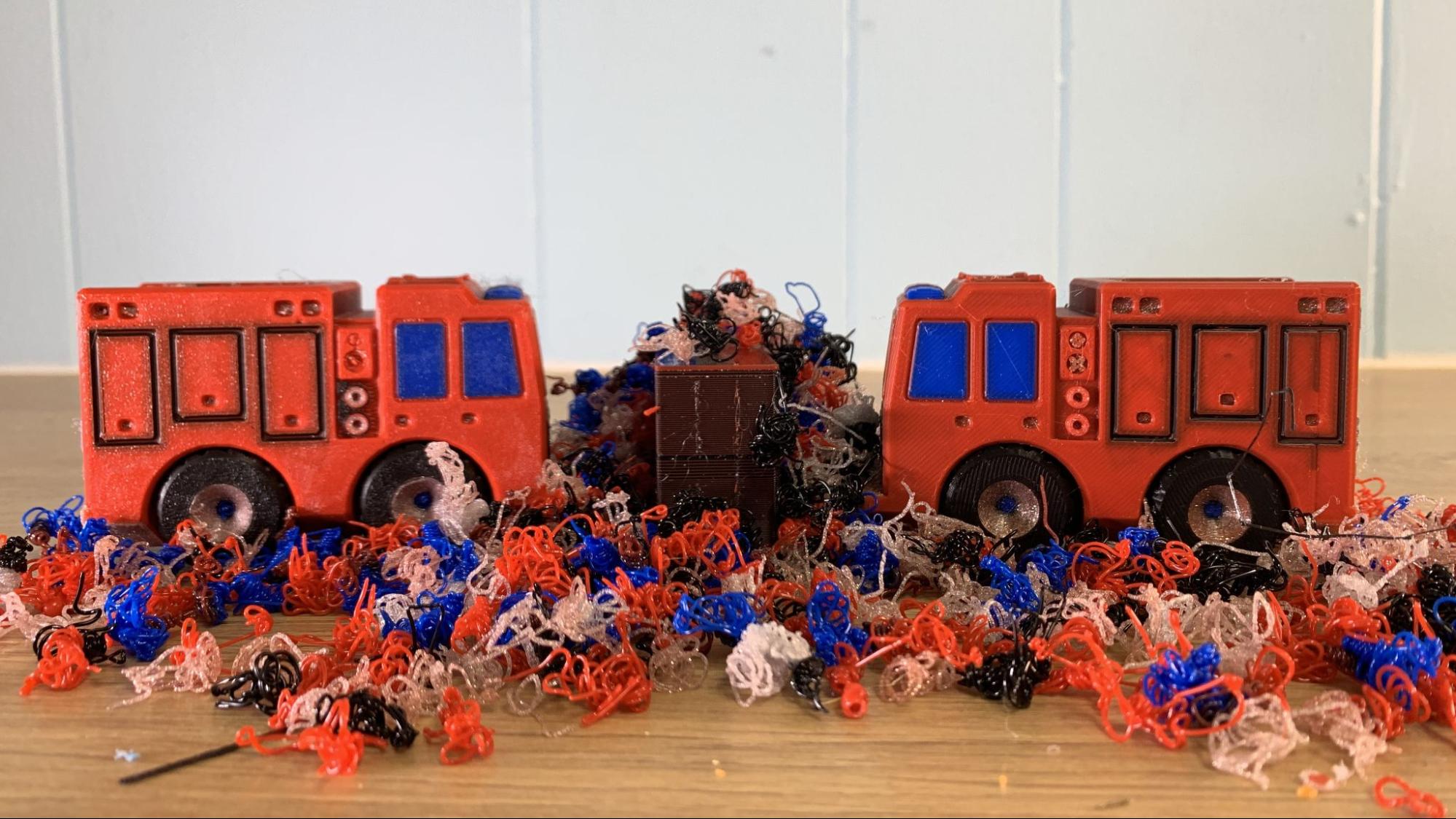
Like the original Bambu Lab printers, the A1 line also creates “printer poop” which the A1 flings to the side. The poop can be tamed with tuning in the slicer but can not be eliminated. For the pair of fire trucks (seen above), 166 grams of filament (46 black, 68 red, 41 silver, and 11 blue) were used to print the fire trucks. After tuning, “flushed” 115 grams, down from 200 grams.
Note, the Bambu Lab AMS Lite can not print TPU – TPU must be used on a separate, non-mechanical spool holder.
More: Bambu Lab A1 Mini Review
Best Low Waste Multicolor 3D Printer
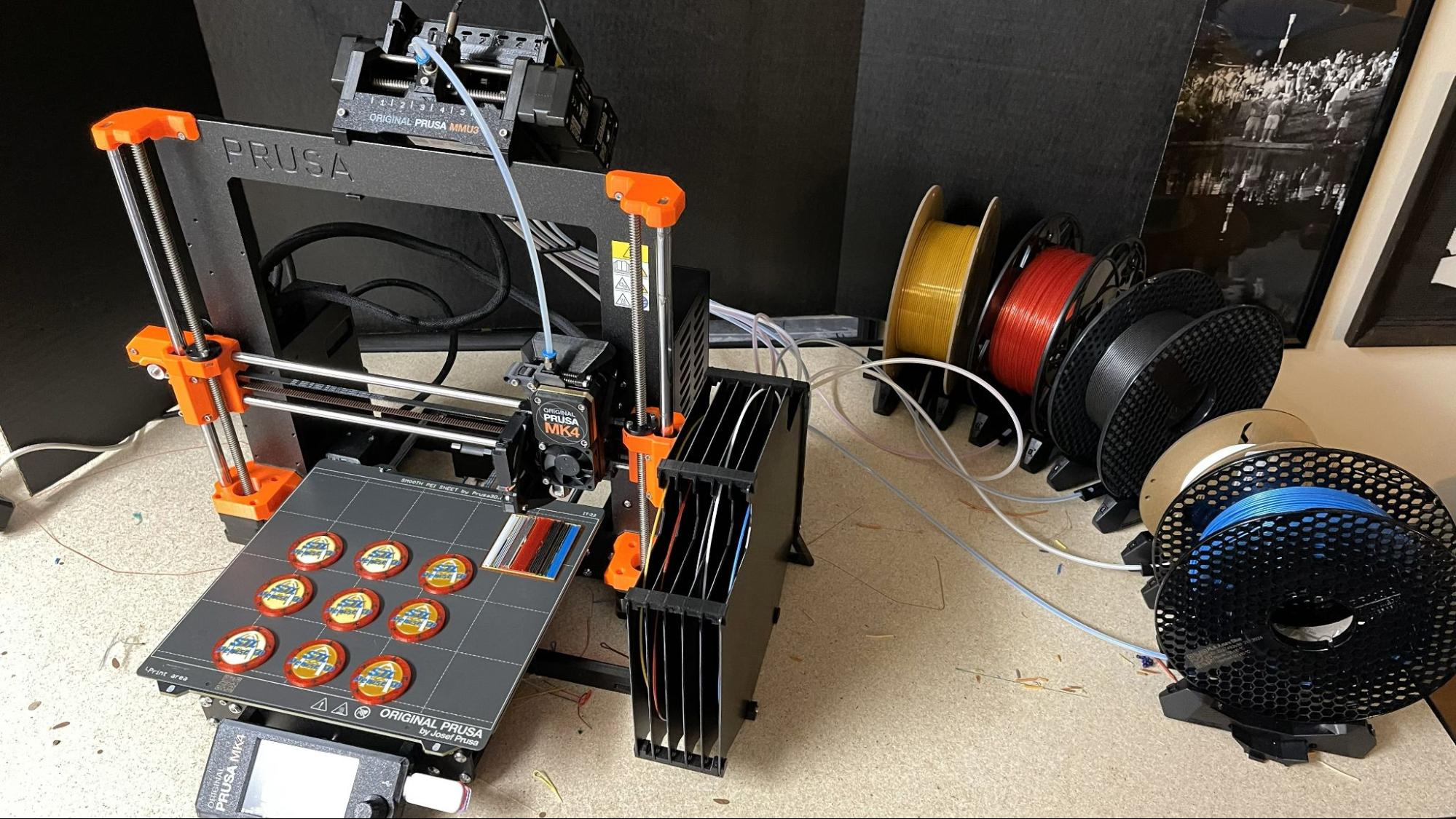
The Original Prusa MMU3 is a modification that can be installed on a Prusa MK4, MK4S and even MK3S+. It requires an advanced understanding of 3D printers to build and requires permanently modifying the toolhead. It also requires a huge amount of table space. If that doesn’t scare you off, then you’re ready for a filament sipping MultiMaterial Unit that can handle five spools of any size with precision. Prusa Research designed the MMU3 to rapidly retract filament from the nozzle, so the only waste is a tuneable purge tower camped out on the rear corner of the print bed.
*️⃣ Test Print
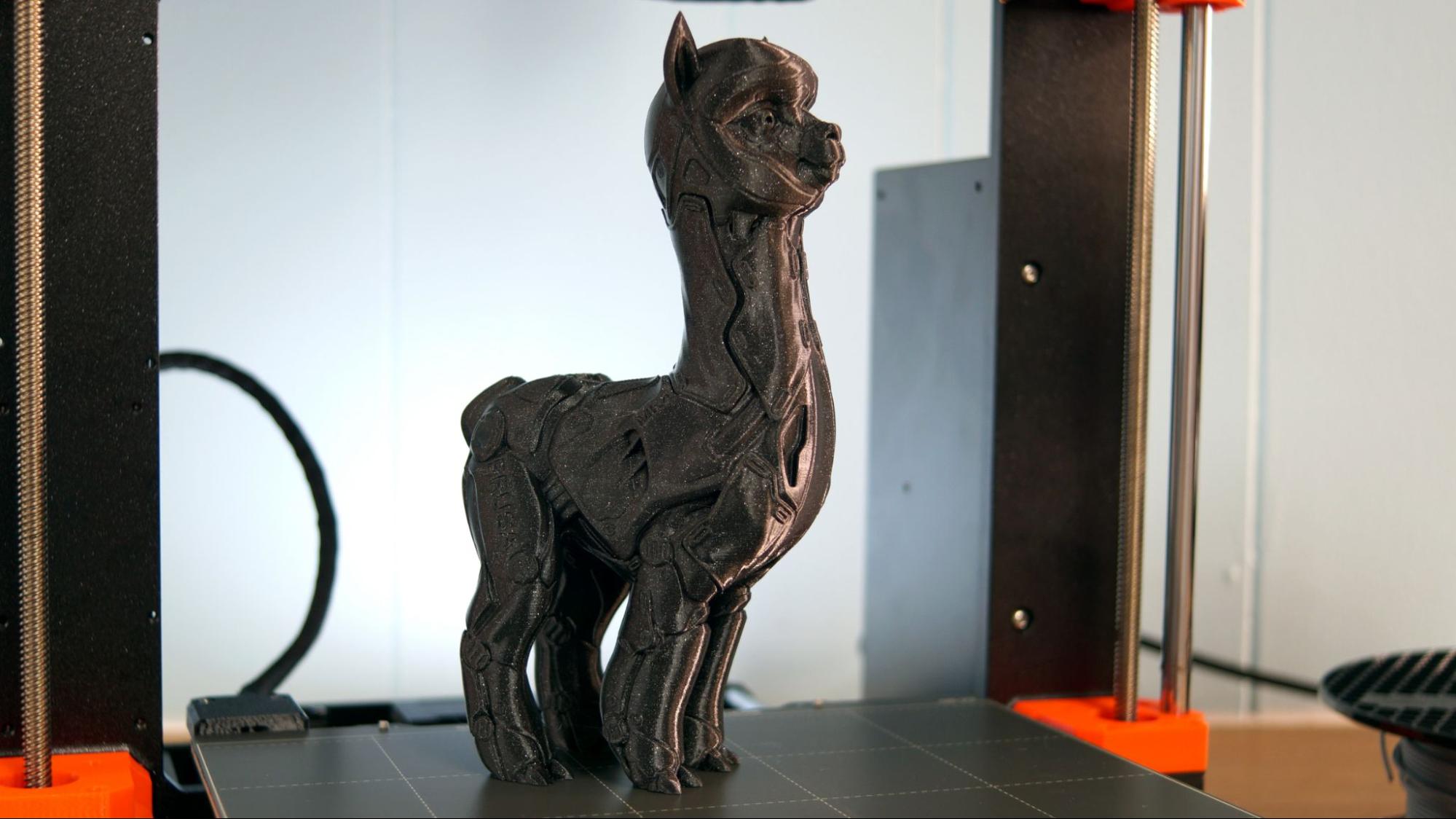
During testing, our MMU3 was paired with a MK4, and produced remarkably clean prints with very little waste. It suffered a couple feeding errors and worked best with fresh, dry filament. The spool holders have adjustable rollers that can handle both plastic and cardboard spools in any size, including half spools and 3KG spools. The spool is only pulled in one direction – retractions are absorbed by the buffer, so there is no fear of tangling. Loading the MMU is a little tedious, as the only motor is located on the MMU itself and filament has to be manual fed through the buffer to the printer.
The MMU3 is a complex device that sits on top of and around your MK4 bed slinger. The bulk of the MMU perches on the printer’s gantry, while a buffer cartridge sits on the side and a mass of tubes connects to a tabletop, five slot spool holder. Our MMU3 took an additional 23 inches of table space next to the printer with an untidy mess of tubes.
The MMU3 is sold as an “upgrade” and currently is not offered with a bundled discount. The DIY kit requires printing the parts and assembling the device from scratch. Attaching the MMU3 to your printer requires modifying the toolhead sensors.
Note, the Prusa MMU3 can not print TPU.
More: Prusa MK4S 3D Printer Review
Best Multi Material 3D Printer
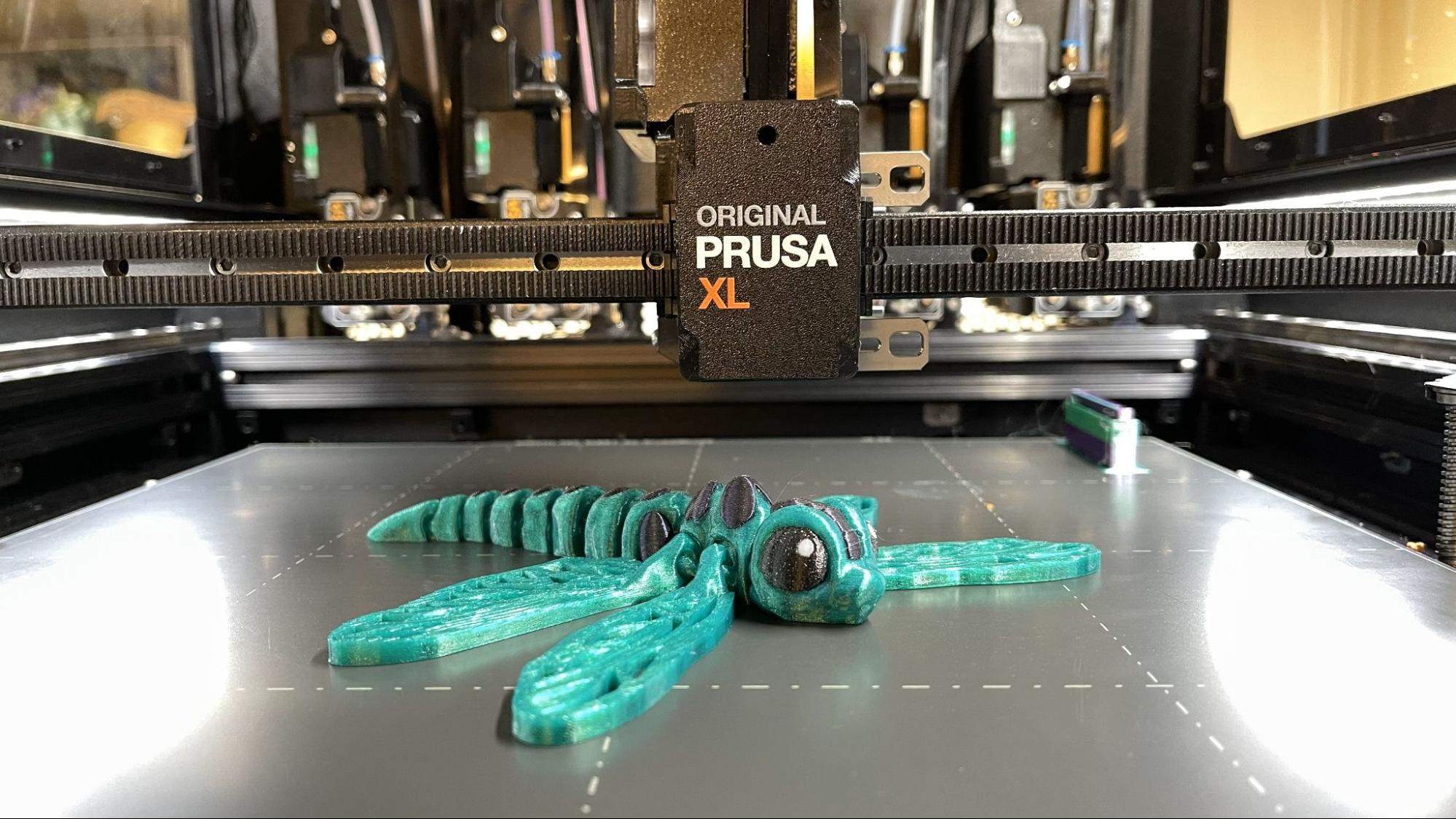
The Original Prusa XL is a 3D printer purpose built for printing with multiple colors and/or materials. It is a Core XY tool changer, meaning each filament gets its own hotend and nozzle. The printer has a single motion system that can pick up each tool head one at a time. There’s no need to clear the nozzles of filament before changing colors (or materials) and each tool head can have its own temperature setting. This system is perfect for mixing various materials, though you still need to work a little slicer magic if you want different materials to bond well – like PLA and TPU. It also works well if you want to print in PLA and use PETG as a non-stick support material.
*️⃣ Test Print
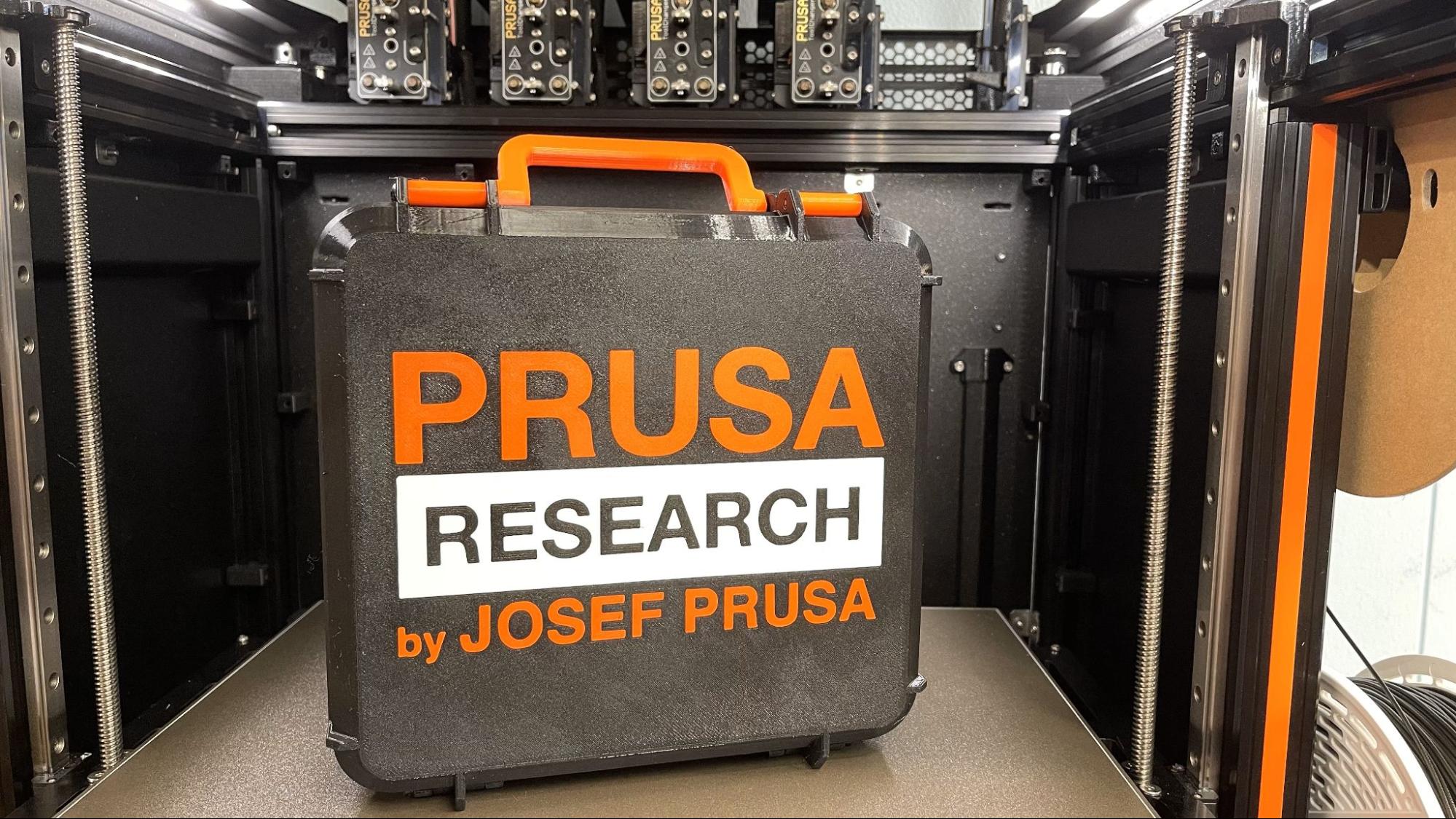
This Prusa Research toolbox (above) from Printables which uses PLA, PETG and TPU. The three materials are in four colors: black and orange Prusament PETG, white Prusament PLA, and red Ninjatek Cheeta for a gasket.
The Prusa XL can be purchased with one, two or five tool heads. Tool heads can also be added at a later time, up to five. The machine is rather pricey – costing $3,999 with five tool heads. This is also Prusa Research’s largest machine, with a 360 x 360 build plate.
Loading filament is a bit of a chore, with each tool head needing nearly five feet of Bowden tube from spool holder to nozzle. The machine is direct drive, so the material needs to be hand fed through the tubes until it hits the extruder. Each toolhead needs to be heated, with the filament fed through to the nozzle, just like a single color printer. Though loading takes more effort, over all print time is shorter than a Bambu Lab printer, as there is no need to respool the filament between color swaps.
The Prusa XL can handle any size spool, up to 2KG, with standard spindle type spool holders mounted to the sides of the printer. It has no problem with 3rd party filaments. TPU is a little tricky because of the length of Bowden tube you need to manually push it through, but it will work. You can also use a separate spool holder on the table, or mounted above, if you need to handle bigger spools or use a dry box.
More: Original Prusa XL Review
Best Multitasker Multicolor 3D Printer
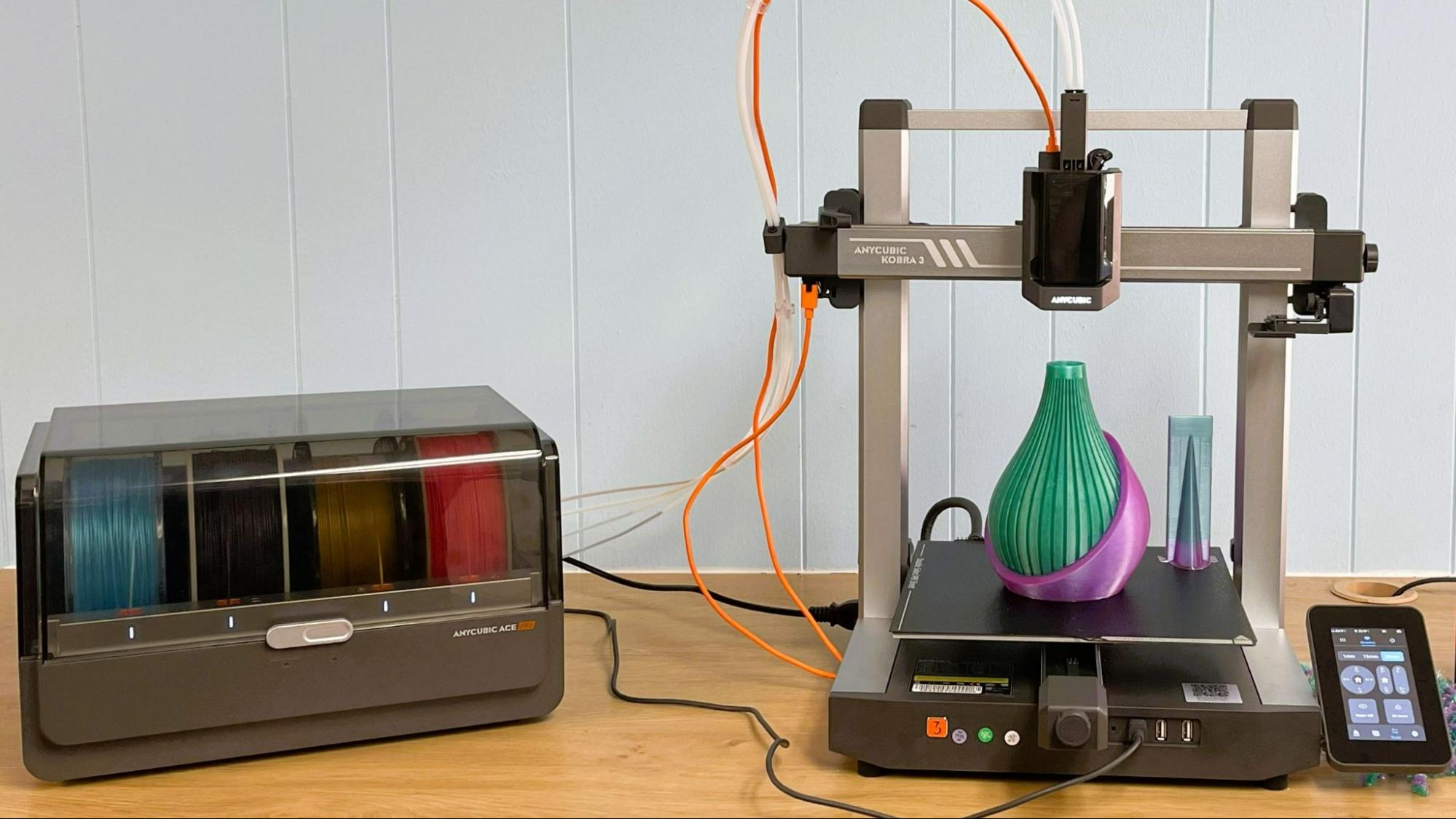
The Anycubic ACE (Anycubic Color Engine) is the first “clone” we’ve seen of the Bambu Lab system. It’s a boxy multimaterial handler custom-made for the new Kobra 3, which has a toolhead similar to the Bambu Lab A1. The ACE pulls double duty as a filament drier and can dry filament while the printer is off or on.
Though the ACE can be bought separately, it is currently only compatible with the Kobra 3, a speedy bedslinger with a custom toolhead and a hub to accept four Bowden tubes from the ACE. Like the Prusa Research MMU, each spool of filament has a dedicated path from the spool holder to the extruder. This means the printer only needs to retract the filament a few inches before swapping colors.
My only complaint with the ACE system is the lack of filament tuning in the bespoke slicer. The Kobra 3 uses a cutter to separate filament at the cold part of the toolhead, with the good filament pulled back a few inches while the leftover filament is pushed through the nozzle in the form of “printer poop.” Currently, this poop can’t be adjusted.
*️⃣ Test Print
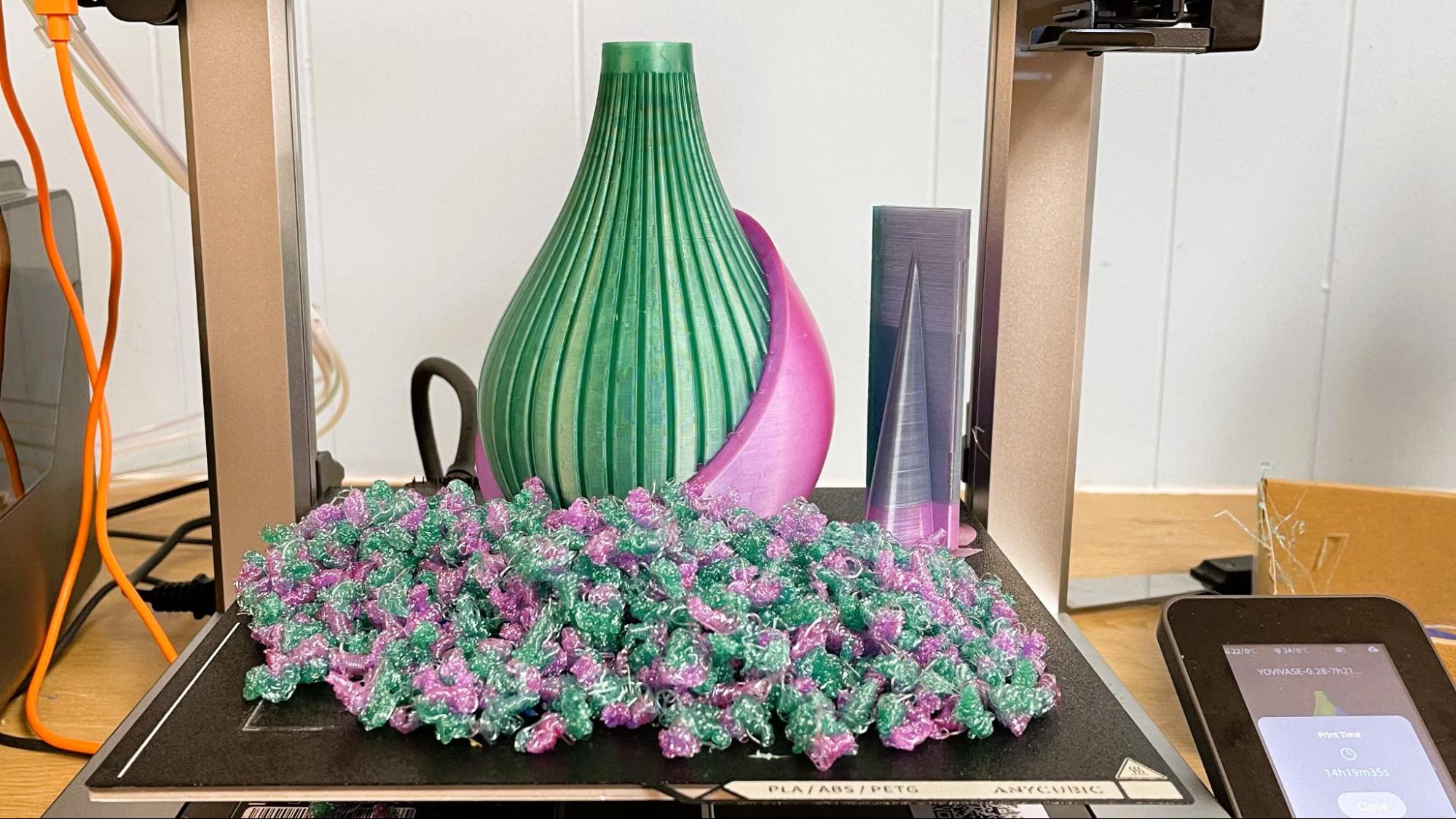
Terra de Verdant’s Yovi Vase (above) was printed in Greengate Emerald PETG and a transition roll of Greengate Purple Reign. This print had 197 grams of wasted material compared to 185 grams of the vase.
The Anycubic website says users will be able to use two ACE’s with one Kobra 3 sometime in the future. And while the ACE can dry TPU, it can not feed it through the system and should be used with a separate spool holder.
More: Anycubic Kobra 3 Review
The difference between Multi Material or Multicolor 3D Printing
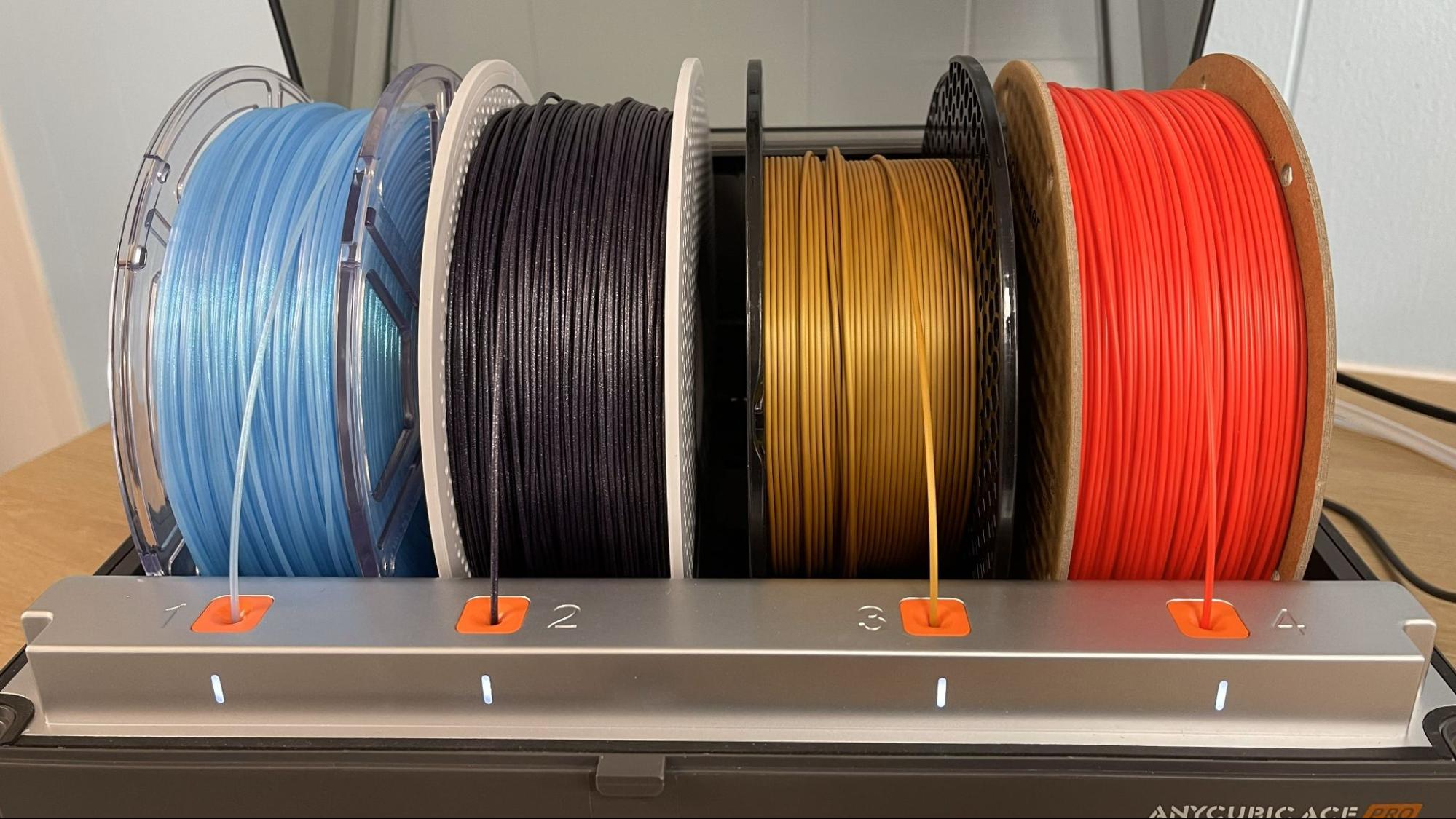
There’s a difference between printing four colors and printing four materials.
◾Multi Material 3D Printing
Combining PLA, PETG, and TPU in one print has inherent risks, as these materials print at different temperatures and won’t even bond to each other. Some hurdles can be overcome with slicing tricks, but you still have to deal with less than ideal bed temperatures and the risk of clogs created by residue from the different materials. (Note, only the Prusa XL can print TPU with other colors/materials.)
◾Multicolor 3D Printing
Bambu Lab’s printers won’t let you mix materials of wildly different temperatures, limiting itself to multicolor. Machines with separate toolheads are better at handling incompatible materials, though Prusa Research got around the problem with a rapid retraction method that yanks enough filament out of the nozzle so that clogs aren’t a problem.
MORE: Best Resin 3D Printers
MORE: Best Budget 3D Printers
MORE: Best Filaments for 3D Printing
MORE: How to Buy the Right 3D Printer


